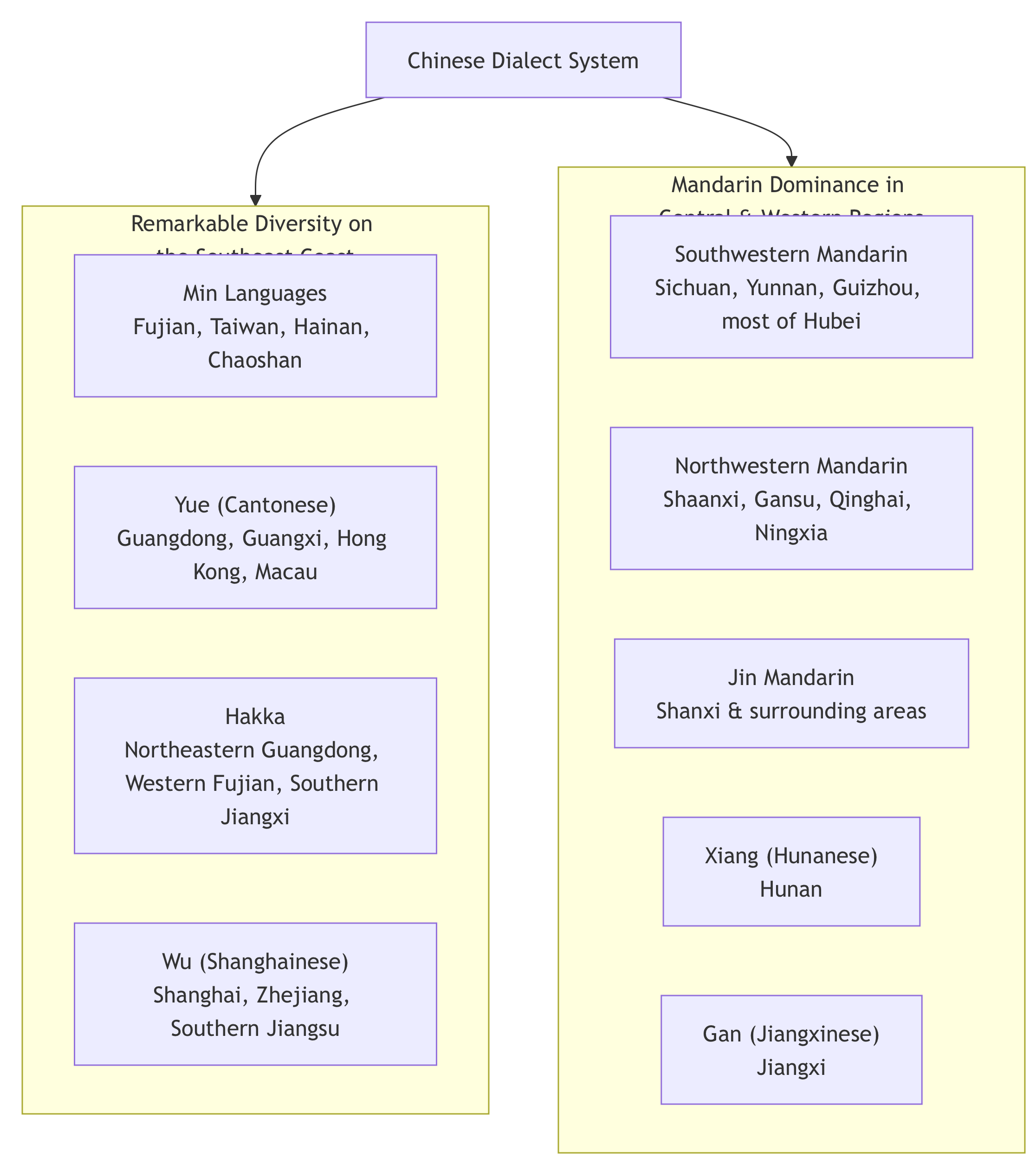Welcome to the fascinating linguistic landscape of China! It is incredibly rich and diverse, which can be summarized as: one national common language, seven major dialect groups, and numerous minority languages.
1. The National Common Language: Mandarin (普通话 - Pǔtōnghuà)
· Status: Mandarin is the official language of the People's Republic of China. It is the common language used throughout the nation. Its use is mandatory in education, media, government affairs, and all forms of national communication.
· What it is: Mandarin is a standardized form of speech. It takes the Beijing pronunciation as its standard phonetics, the Northern Mandarin (北方官话) dialect as its base, and the grammar of modern vernacular Chinese (白话文) as its normative grammar.
· Writing System: Mandarin uses Chinese characters (汉字 - Hànzì) for writing. Characters are logograms, where each character generally represents one syllable and carries its own meaning.
· Simplified Characters (简体字 - Jiǎntǐzì): Used in Mainland China, Singapore, and Malaysia. This is a simplified system of characters promoted since the 1950s.
· Traditional Characters (繁体字 - Fántǐzì): Used in Taiwan, Hong Kong, and Macau. This is the traditional, unsimplified form of the characters.
· Pinyin (拼音 - Pīnyīn): This is a system that uses the Roman alphabet to spell out the sounds of Chinese characters. It is an extremely important tool for foreigners learning pronunciation and for Chinese children to learn characters.
Significance for Tourists/Foreigners: Learning some basic Mandarin phrases (e.g., 你好 - Nǐ hǎo: Hello, 谢谢 - Xièxie: Thank you, 多少钱 - Duōshao qián: How much?) is very useful for traveling in major cities. Apps that use Pinyin (like translation software, maps) are essential.
2. Major Local Languages (Dialects)
Although Mandarin is the common language, most Chinese people speak at least one local dialect, typically at home or in local settings. The differences between many of these dialects are so significant that they are often mutually unintelligible, meaning speakers of one cannot understand another. Linguists generally categorize Chinese dialects into the following major groups:
Important Note: The following chart visually illustrates the main distribution patterns of Chinese dialect groups in China, helping you understand their geographical diversity:

1. Mandarin (官话 - Guānhuà) / Northern Dialects
· Distribution: Covers a vast area, including most of northern, western, and southwestern China. It spans about two-thirds of the country's land area.
· Characteristics: As the basis for Standard Mandarin, the differences within the Mandarin group are relatively small. Speakers from different Mandarin sub-regions can generally communicate. What we commonly refer to as "Sichuanese" or "Shaanxinese" are actually sub-dialects of Mandarin.
2. Yue (粤语 - Yuèyǔ / Cantonese)
· Distribution: Guangdong province, Guangxi province, Hong Kong, Macau, and overseas Chinese communities.
· Characteristics: This is one of the most internationally famous Chinese dialects, as many early Chinese immigrants came from Yue-speaking areas. It preserves many features of Middle Chinese and has 6 to 9 tones (compared to Mandarin's 4). Its pronunciation and vocabulary are vastly different from Mandarin. Hong Kong cinema and Cantopop (Cantonese pop music) have given it significant global influence.
3. Wu (吴语 - Wúyǔ)
· Distribution: Shanghai, Zhejiang province, and southern Jiangsu province (e.g., Suzhou, Wuxi).
· Characteristics: Represented by the Shanghai dialect, Wu is known for its soft, flowing, and mellifluous quality, often called "the gentle speech of Wu." It retains a full set of voiced initials (similar to the distinction between unvoiced and voiced consonants in English), a feature absent in Mandarin.
4. Min (闽语 - Mǐnyǔ)
· Distribution: Fujian province, Taiwan, Hainan province, the Chaoshan area of Guangdong, and the Leizhou Peninsula.
· Characteristics: This is likely the most diverse and complex dialect group, with significant internal variation. Southern Min (e.g., Amoy/Taiwanese), Eastern Min (e.g., Fuzhounese), and Northern Min are often mutually unintelligible. Min is considered a "living fossil" of Old Chinese, preserving many lexical and phonological elements from ancient times.
5. Hakka (客家语 - Kèjiāyǔ)
· Distribution: Relatively scattered, with major communities in northeastern Guangdong, western Fujian, and southern Jiangxi.
· Characteristics: The Hakka people are an ethnic group who migrated from central China southward throughout history. Their language has preserved many characteristics of Middle Chinese. Hakka's distribution is defined more by "ethnicity" than by a continuous "geographical region."
6. Xiang (湘语 - Xiāngyǔ / Hunanese)
· Distribution: Primarily in Hunan province.
· Characteristics: Represented by the Changsha dialect, Old Xiang retains some unique ancient sounds, while New Xiang has been heavily influenced by the surrounding Southwestern Mandarin.
7. Gan (赣语 - Gànyǔ / Jiangxinese)
· Distribution: Primarily in Jiangxi province.
· Characteristics: Represented by the Nanchang dialect, Gan shares some similarities with the neighboring Hakka and Wu dialects.
3. Minority Languages (少数民族语言 - Shǎoshù Mínzú Yǔyán)
China has 55 officially recognized ethnic minorities, and many of these groups have their own languages. These languages belong to completely different language families, such as:
· Tibetan (Sino-Tibetan family) - Tibet, Qinghai, Sichuan, Yunnan.
· Uyghur (Turkic family) - Xinjiang.
· Mongolian (Mongolic family) - Inner Mongolia.
· Zhuang (Tai-Kadai family) - Guangxi.
· Korean (Koreanic family) - Jilin (Yanbian Prefecture).
· Yi, Miao (Hmong), Dai and many others.
The governments of autonomous regions (e.g., Tibet, Xinjiang, Inner Mongolia) often use their respective minority languages alongside Mandarin.
· In major cities like Beijing, Shanghai, or Guangzhou, you can easily get by with English in tourist areas and hotels, but basic Mandarin is incredibly helpful elsewhere.
· Don't be surprised if you hear completely different languages (like Cantonese, Shanghainese, or Uyghur) being spoken. It's all part of China's incredible linguistic tapestry.
· Translation apps and body language are your best friends when navigating this diversity.
